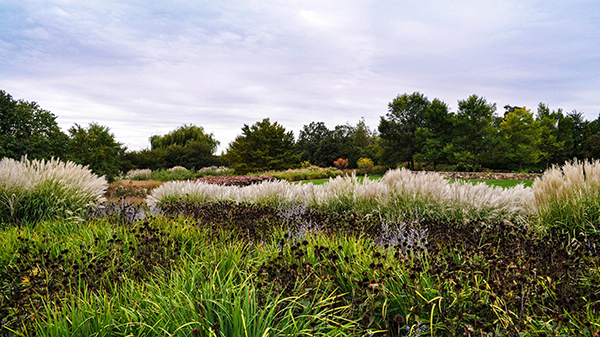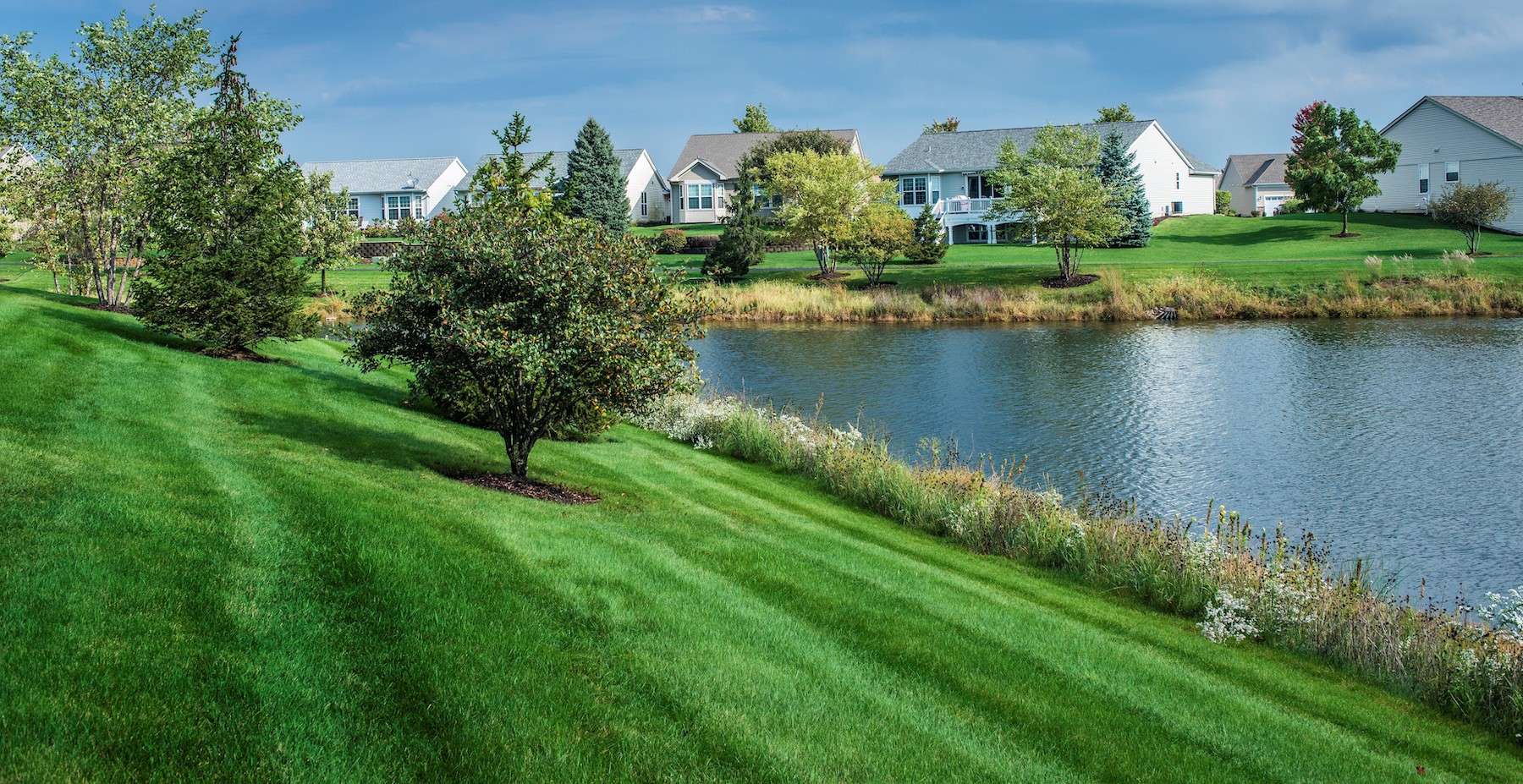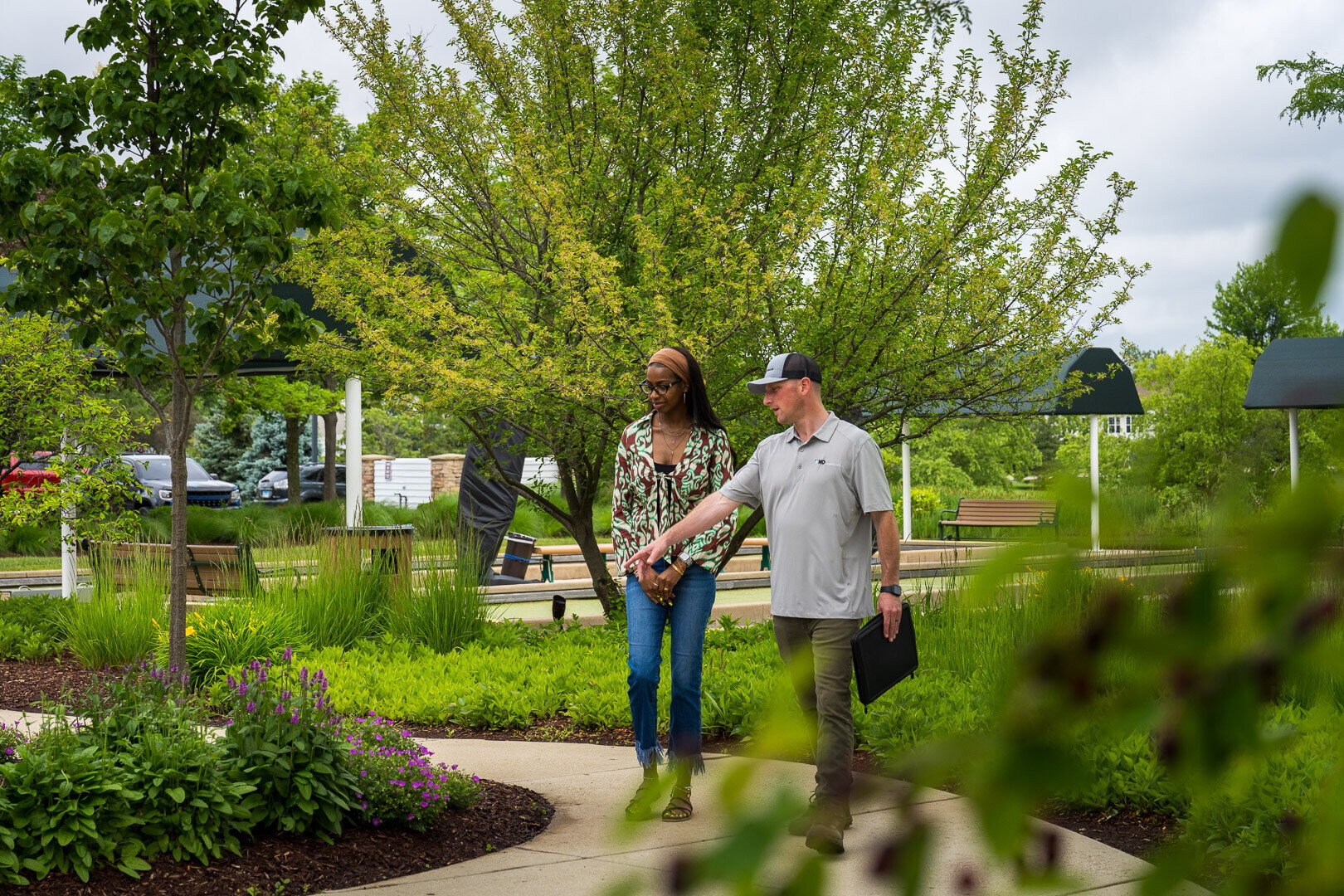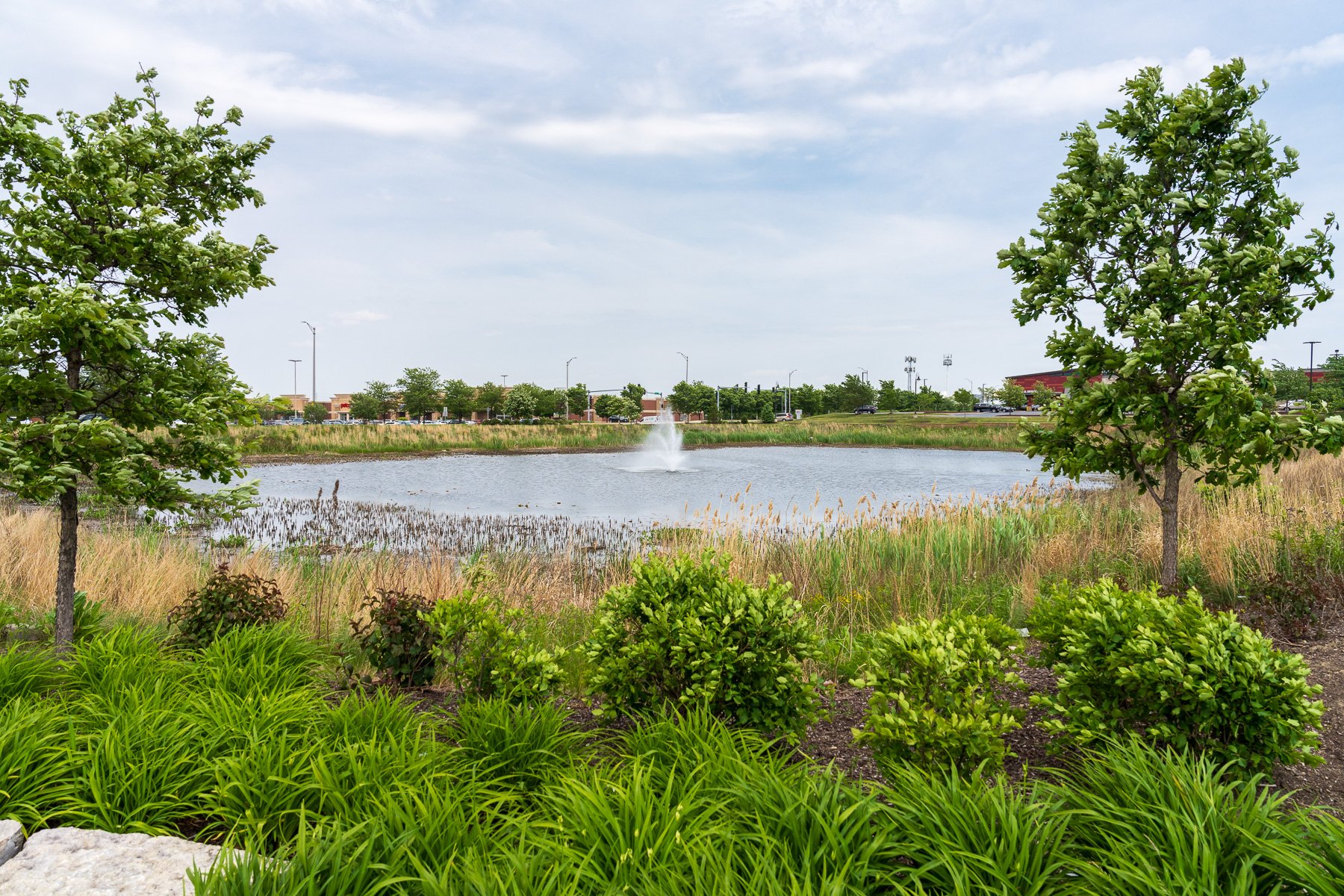Storms in Greater Chicago can range from timid to thunderous.
Some years, we get a lot of strong winds and raging rains and other years, we don’t. Sometimes, those storms come with hail and flooding, and other years, Mother Nature takes it easy on us.
Regardless of what type of storm year is coming, managing stormwater is a big issue for Greater Chicago commercial properties every year.
A flooded parking lot in your retail space does more than cause soggy feet to everyone who parks there and walks through it. It can also cause excess mud and soil displacement, chase customers away, and give your entire property a bad reputation.
When it storms, water falls on hard surfaces like parking lots, roads, sidewalks, walkways, driveways and rooftops, it can’t seep into the ground so it runs off into other areas. This can cause local flooding. High volumes of water can even cause areas on your commercial property to erode, causing landscape instability and upping your chances of spending excess funds on replacements and renovations.
But stormwater doesn’t have to cause headaches for you. There are ways you can better manage stormwater on your commercial property to limit liability risks, costly repairs, and hours of stress and worry.
Let’s talk about commercial stormwater management and how important it is for Greater Chicago property managers to include it in their grounds maintenance plans.
Important Commercial Stormwater Management Ideas
Every season, your commercial property needs targeted maintenance. Storm season is no different.
Stormwater management can help prepare a commercial landscape for storms to ensure fierce winds and torrential rain don’t cause any significant damage to your commercial buildings or risk the safety of people who work and visit your property.
Follow these key steps to get your planning done correctly and build a stronger and healthier landscape that can take whatever Mother Nature throws at it.
Keep Up Maintenance to Ensure a Stronger, More Stable Landscape
Protecting commercial landscapes from stormwater starts simply with regular and proper grounds management.
Weekly mowing during the growing season, spring and fall cleanups, bed edging and maintenance, fertilization, mulching, tree and shrub pruning, and snow and ice management can all keep your property in tiptop shape, making it stronger and more able to hold up to storms. Healthy soil and healthy plant roots can help control erosion and ensure smoother stormwater management.
Detention Pond vs. Retention Pond
A detention pond temporarily stores stormwater runoff. It is there to collect stormwater by storing it and releasing it slowly until it drains. A retention pond, on the other hand, is designed to permanently hold water.

On Greater Chicago commercial properties, we deal more with detention ponds.
Maintaining detention and retention ponds to ensure they are properly collecting stormwater on a commercial property is an important part of commercial grounds management.
Without proper detention pond maintenance, you could risk losing the stability and stormwater management capabilities of your detention pond.
KD Landscape uses a technique called riprap to mitigate erosion on detention ponds. Riprap is a method of installing a permanent layer of large, angular stone, cobbles, or boulders. These help armor, stabilize, and protect the soil surface against erosion.
You also need to properly manage the vegetation around your detention pond. This might include weekly mowing or cutting grasses down annually. Hydroseeding can help restore greenery around your detention pond if erosion occurs.
Remember to clear any detention pond blockages to ensure water can flow freely. Blockages tend to happen near inflow/outflow areas. Weeding and trimming regularly and removing trash and debris on a consistent basis can help.
One more detention pond maintenance task to keep on your to-do list is managing critter damage that can compromise the integrity of embankments. Groundhogs, for instance, can burrow in and disrupt these areas. Fixing holes and reseeding damaged areas is important.
Opt For a Rain Garden
If you experience flooding in a low-lying area of your commercial landscape, especially after rain, turn that wet spots into an attractive rain garden as a stormwater management solution.
Rain gardens are made up of beds that use porous soil to grow plants that thrive in wetter environments. These versatile gardens can be as small or large as necessary to fit your space.

To create a rain garden, a commercial landscape designer starts with a man-made depression that is designed to collect rain runoff. The garden is then filled with gravel or small rocks, mulch and rain garden plants to slow water movement and absorb excess water. It also removes pollutants in the water before it reaches nearby storm drains.
With a rain garden, you lose your drainage issues and gain improved water quality, a habitat for birds and butterflies, and a low-maintenance, gorgeous addition to your commercial site.
Try a Bioswale As a Stormwater Management Option
A bioswale is a conventional ditch or swale, modified and planted with appropriate native and Greater Chicago-friendly plants with the goal of increasing water percolation and pollutant removal as stormwater flows through it.
Basically, bioswales consist of a low-lying drainage course with gently sloped sides and lots of vegetation (think of them as linear rain gardens). They’re planted with native plants that receive and absorb stormwater runoff from impervious surfaces, like parking lots, walkways and driveways.

In a bioswale, the water’s flow path, along with the wide and shallow ditch, is designed to maximize the time water spends in the swale, which aids the trapping of pollutants and silt. Bioswales make a lot of sense as stormwater management solutions near parking lots because they help filter contaminants from vehicles like oil and grease as rainwater carries them off of the hard surface and into the bioswale.
Permeable Paving Surface Solutions
Permeable pavers are great additions to high-traffic commercial landscaping, especially if the area you’re looking at tends to collect a bit more water than other areas.
These pavers reduce runoff volume by trapping and slowly releasing rainfall into the ground instead of allowing it to flow off into storm drains and erode nearby areas, making them excellent stormwater management solutions.
Enlist a Professional For Commercial Stormwater Management
Stormwater management techniques only work their best when properly planned, installed, and managed.
That’s why hiring a professional with stormwater management experience is important. They will know what areas to watch for and what maintenance is necessary to prevent unnecessary, costly issues down the road.
KD Landscape Can Be Your Partner For Stormwater Management Solutions in Greater Chicago
Stormwater doesn’t care about your tight budget or your busy schedule. It will continue to flow regardless, so managing it deserves some consideration and proper planning.
After all, with everything else on your plate, the last things you want to add to your list are stormwater damage repairs. Imagine what that would do to your budget.
We get it. Being diligent and planning for a rainy day now can save you so much time, money, and headaches throughout the year. Don’t wait until the last minute. KD Landscape can help you with commercial stormwater management in Greater Chicago so you can put your facility in the best position possible for a safer facility.
Want to learn more about how KD Landscape can help you manage stormwater challenges on your Greater Chicago commercial property? Get started today with a free quote. We’ll review your options together so you can feel confident and make a great choice.









